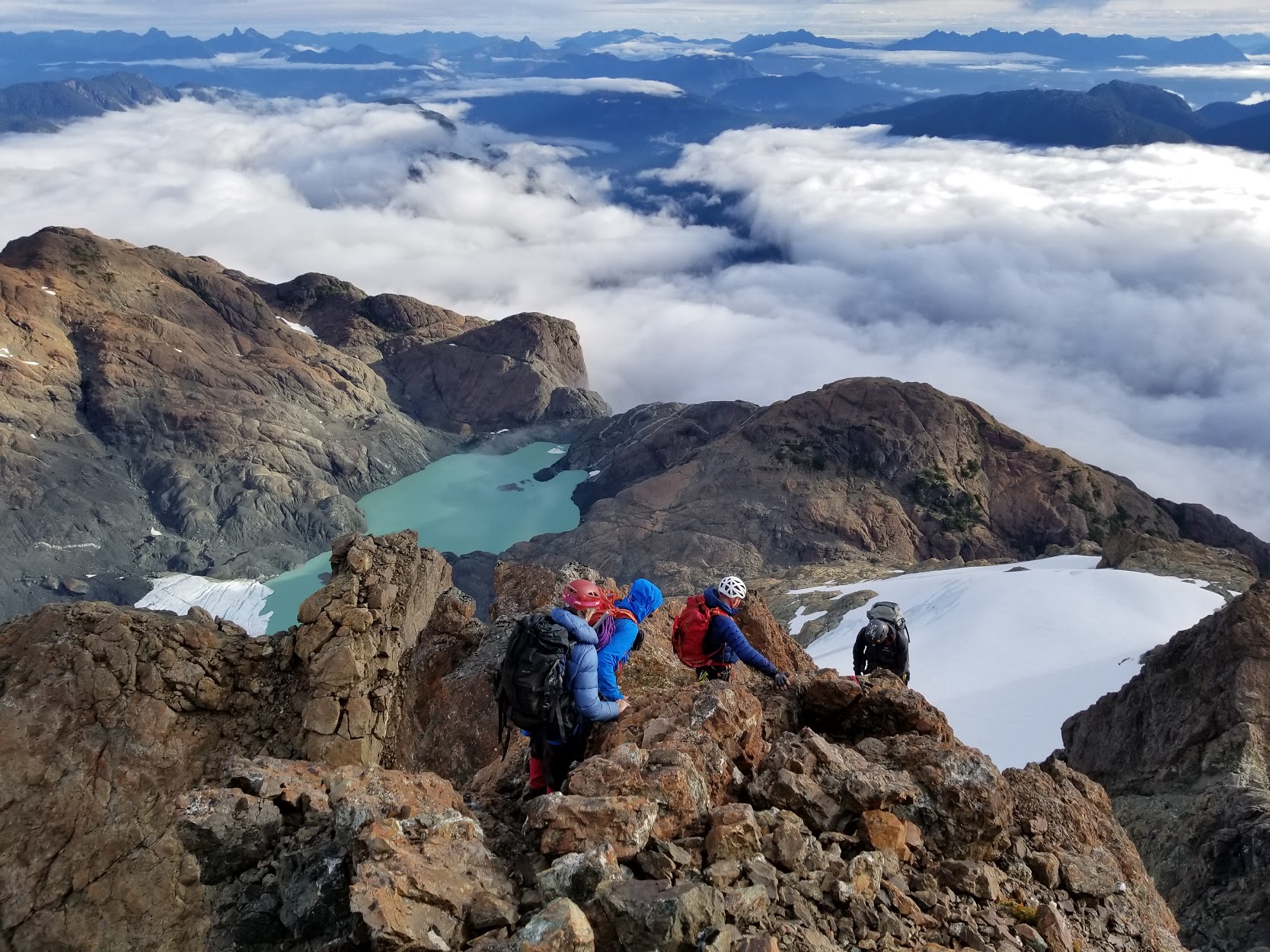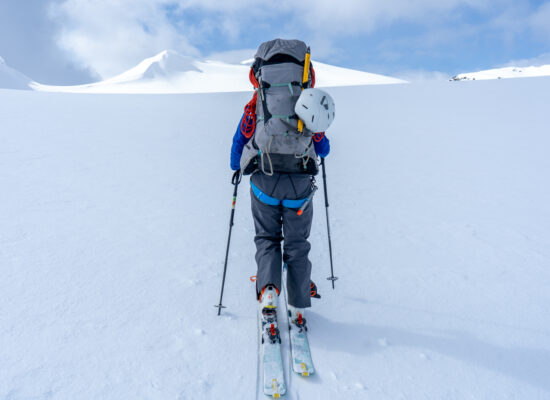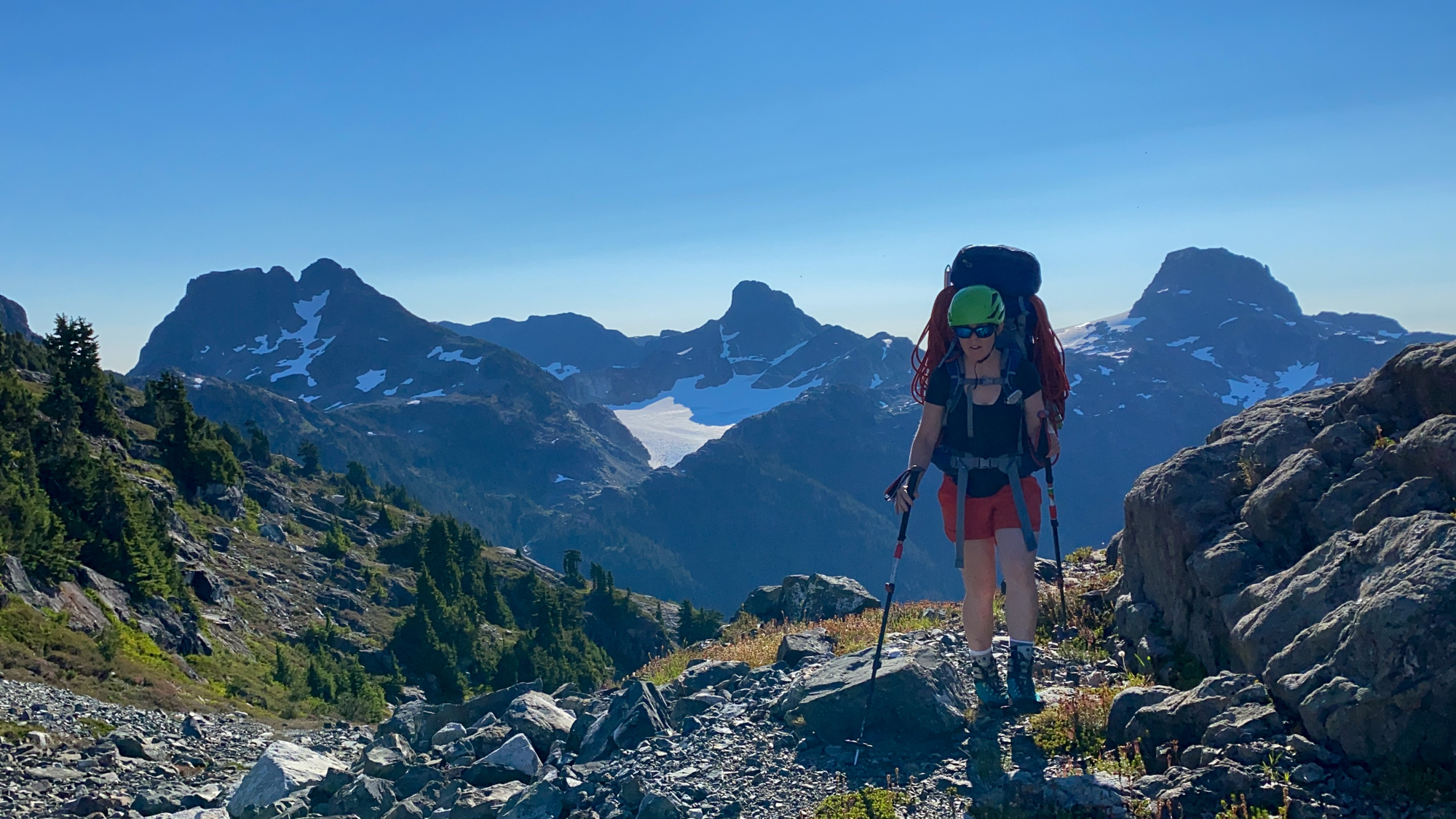I thought I was signing up for a 48 hour suffer fest.
It was the end of September. Rain was in the forecast. I’ve been feeling too cold to function inside my own apartment. The ACC-VI website lists Rugged mountain as the second hardest Island Qualifer. Uff.
I’m feeling highly motivated to finish all nine of my Island Qualifiers, so I didn’t want to miss out on this opportunity to at least learn something about the mountain. I signed up for the trip.
I was happily surprised that the whole weekend turned out to be extremely pleasant.
I’ve heard the approach to Rugged used to be a tortuous bushwhack. Very recently, a trail has been cleared making it a quick walk. (I’ve heard rumours about who we can thank for this, but I am not sure if that is helpful to put on my blog. So I’ll leave that part out for now.)
We got up to the camping spot Nathan’s Col in about four hours. After deciding to wait to make the summit push until the next day, we spent a little time exploring the glacier and looking at various routes. We even found some running water so we did not have to melt snow.

With not much to do, I ended up heading to bed around 8:00pm. Nine hours of sleep? Yes, please.
We started the next day just a before the sun came up, around 6:30am. We finished the short climb up the glacier just as the sun was rising. We then started moving around the system of ledges in daylight.
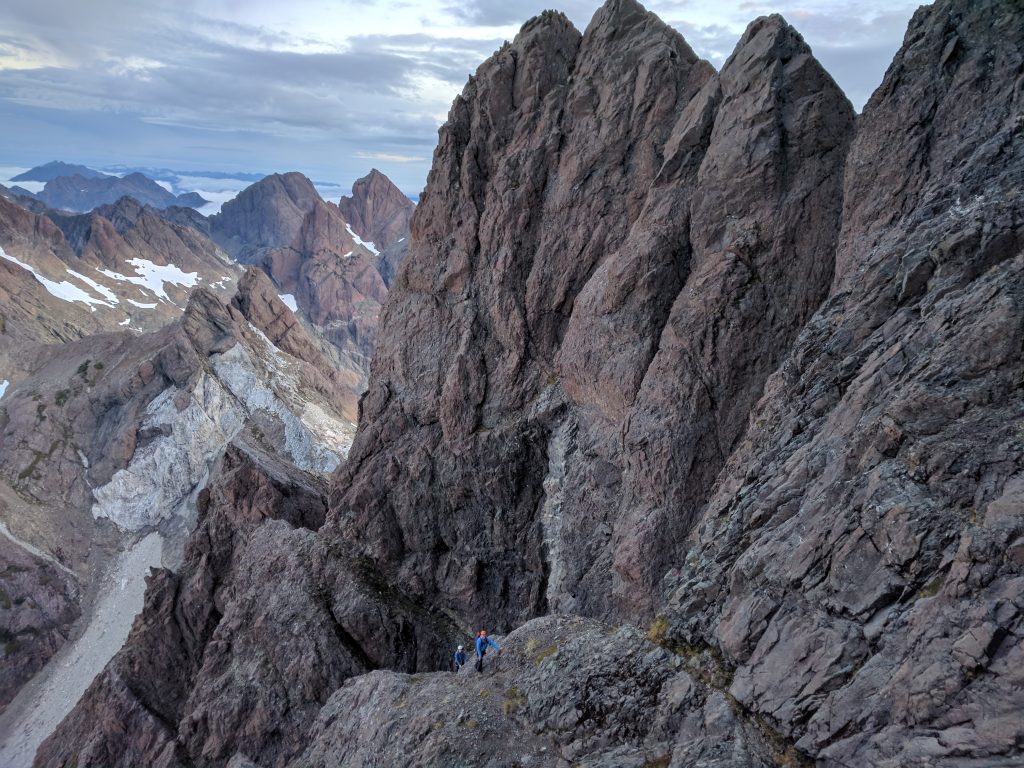
We all really enjoyed the fact the these ledges were labelled “adequate” in Alpine Select. This route looked quite intimidating, but ended up feeling really wide enough to not be scary. Adequate indeed.
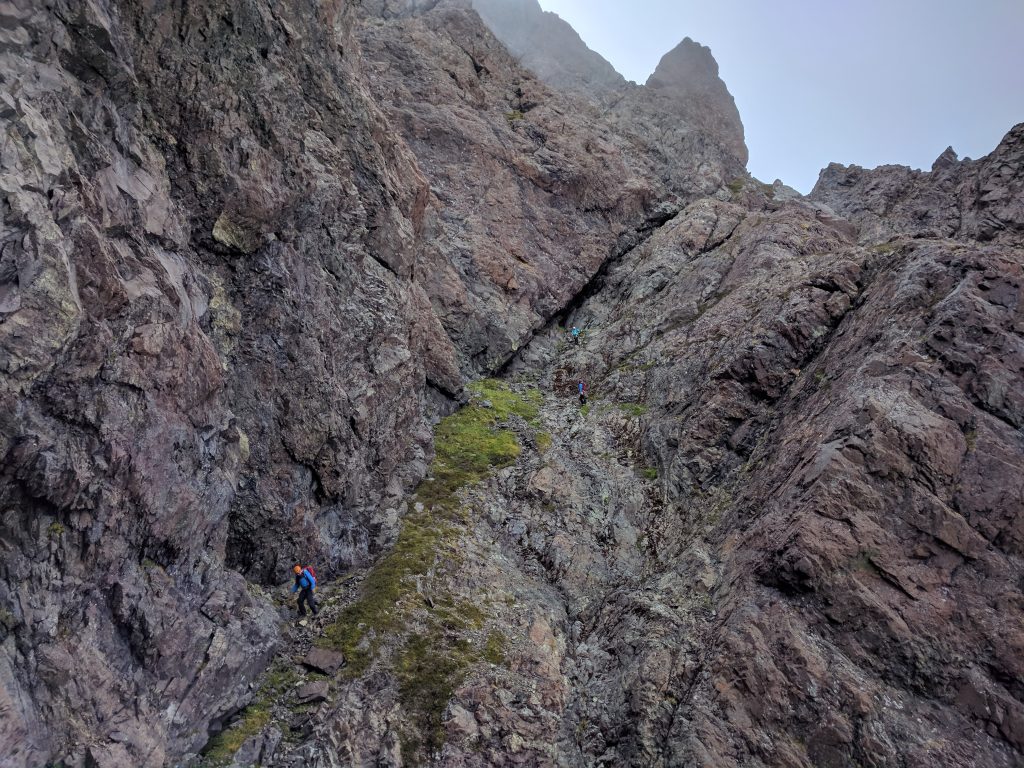
Most of the climbing was easy and fourth class. Some of us chose to use ropes on the few parts of fifth class. And before we knew it, we were at the summit some 2.5 hours later! We all chose to rappel down a few parts, but there plenty of opportunities to down climb.
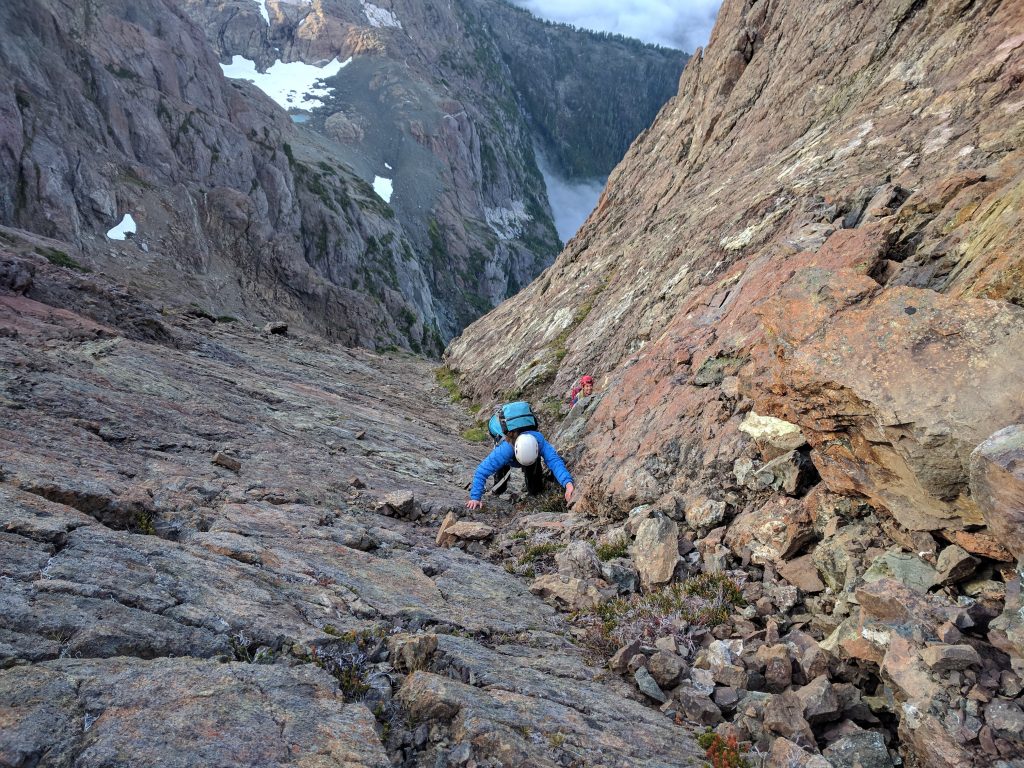
The entire second day only took about nine hours. The second we reached our cars, it started raining. Hard to believe our luck!
Thanks to Evan for leading this Alpine Club of Canada trip.
How to make your next adventure a safe one
This is a wilderness area that very few people visit each year. You will need to know how to be self-reliant and take good of yourself.
This includes having the experience & gear required for wilderness navigation, traveling on steep snow, fourth and fifth class climbing, as well as rappelling. You should have plan for how to handle unexpected problems with your vehicle, as the chances of someone happening to drive by are low. You should also leave a trip plan with a responsible person and have a way of communicating in case of an emergency (cell phones will not work).
Discover more from We Belong Outside
Subscribe to get the latest posts sent to your email.

